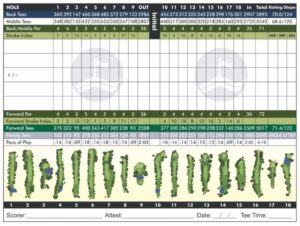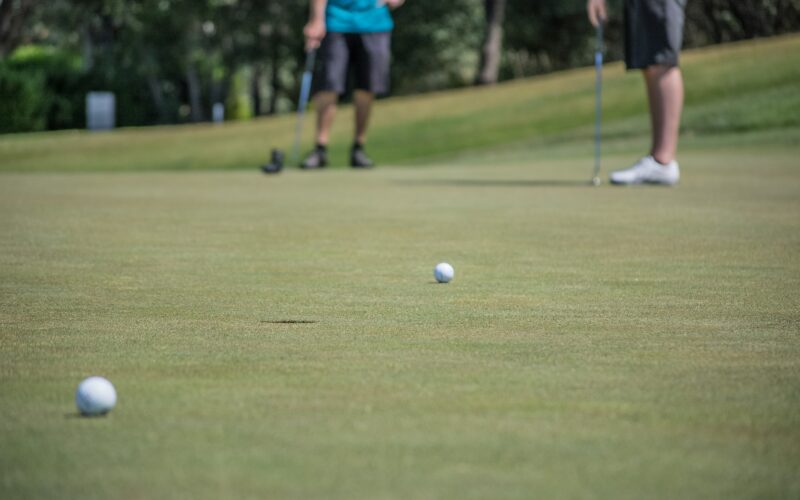When you head out to the golf course, there are a few essentials you should make sure to have with you: golf clubs, golf balls, a few tees, and your handicap. A handicap in golf is one of the equalizers of the game. There is a tremendous gap in golf ability between more experienced golfers and beginners, so in order to make the game more equal for everyone, there is the handicap system to attempt to figure out the correct number of strokes for everyone based on his or her golfing ability.
A handicap is the number of extra strokes you would need in order to shoot par on a course. Just like in golf, the lower the handicap, the better a golfer is, because you are able to reach par in fewer shots. For example, a 18 handicap would be someone who typically shoots 18 shots over par, meaning if they were given 18 strokes, they should, at least in theory, be able to shoot par. Compared to a zero handicap, also known as a scratch golfer, an 18 handicap would be “given” one stroke per hole, so when the 18 handicap bogeys every hole and the scratch golfer pars every hole it would result in equivalent scores. Handicaps are designed to help give everyone a shot, even if there is a wide gap in ability, in order to help to make golf more competitive.

Now before you try to dig your old scorecards out of your bag in order to attempt to find your handicap, know that trying to calculate your handicap is slightly more complex than finding out how many strokes over par you shot the last time you played golf. Your handicap index depends on more than just your score; it is affected by the course rating and slope rating of the course you are playing as well. Once you have factored in how slope and course rating changes your score, you can follow these steps to figure out your handicap by using the formulas found here.
Additionally, there are specific rules to follow when it comes to scoring and trying to find your handicap. For example, the maximum number of shots you would put down for a hole varies depending on your handicap. Say you botched a hole and hit into the water twice and three-putted, and end up with a 10 on a par 4, depending on your handicap, that 10 may be recorded as a lower number, such as an 8, on your scorecard.

The course rating is determined by the score a scratch golfer typically shoots on the course, which is usually around 72. The slope rating tells you how much tougher a course is for someone with a higher handicap compared to a scratch golfer. Courses that have a higher slope rating tend to be much longer, as well as have greens that are trickier for a typical golfer. Both of these elements provide much more of an advantage to more experienced players that are able to hit longer and read greens more effectively.
A “sandbagger” is a term used for someone who purposefully plays poorly in order to get a higher handicap, which will grant them more shots on each hole. It is a derogatory term, and sandbaggers are looked down upon, as it is poor sportsmanship in the “gentlemen’s game.” Again, remember that the whole point of a handicap is to look to level the playing field — instead of leveling the playing field, sandbagging would be giving yourself a field sloped downhill. In short, don’t be a sandbagger and find your handicap, and fun times on the golf course will ensue.
Photo Credit: Google Creative Common Licenses, Pixabay









